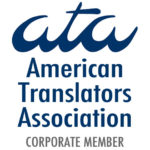Non-profit organizations and NGOs focus on improving the lives of others through diverse initiatives targeted at issues such as housing, social welfare, the environment, health care, education and human rights. These organizations typically require translation services to effectively explain their vision to a global audience, carry out their campaigns and fundraising efforts, and to communicate with those whom their programs benefit and serve. The social impact of materials translated for non-profit organizations must be carefully considered, along with the fact that virtually all agencies of this type function under budgetary constraints.
In the United States alone, there are hundreds, if not thousands, of non-profit organizations taking action to better the lives of the Latino community through their programs and initiatives. Non-profit organizations aimed at serving Hispanics are particularly vital to recent immigrants, who benefit from assistance without the difficulty of the language and culture barrier. Some of the largest non-profits devoted to the U.S. Hispanic community include the ASPIRA Association, Hispanic Housing Development Corp., the National Council of La Raza, and the Hispanic Scholarship Fund.
Non-profit agencies are particularly involved in South America, with many organizations choosing to focus on Brazil. The non-profit sector in Brazil is expanding, with U.S. companies such as Walmart supporting philanthropic activities in Brazil as a means to establish a presence in this fast-growing, influential economy. It’s essential for Brazilian non-profit organizations looking to solicit donations from corporate entities and foundations abroad to translate their materials from Portuguese.
A non-profit organization in its initial stages may have little to no budget for translation services. In this case, non-profits will sometimes connect with student translators or linguists just starting their careers who are in need of “résumé builders.” Experienced translators – who are likelier to turn out a high quality translation – often work for more established NGOs or non-profit agencies at reduced rates, as a way to give something back to the community.
If you’re a representative of a non-profit organization or NGO, click here to learn more about Transpanish’s discounted translation rate for non-profits.
Related articles:
Translations for Non-profits in a Bad Economy
Latinos and the Non-profit sector




